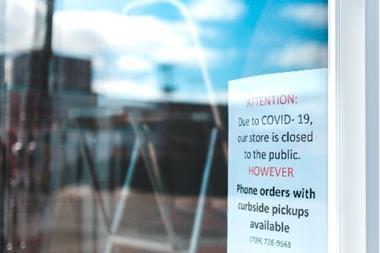The Covid-19 pandemic has shone a - sometimes uncomfortable – spotlight on the insurance industry
The yawning “gaps between private sector insurance-led solutions and public provision” is an issue highlighted by law firm DAC Beachcroft within its thought leadership report The interconnectivity of solutions.
The report explained: “No-one is suggesting that insurers could have responded to protect individuals and livelihoods in the way governments have, but the pandemic has cast [the] government in the role of insurer of first resort in the eyes of many.
“The insurance industry needs to be at the heart of the debate about how sophisticated economies facing major risks and new disruptive threats respond.”
For Lord Hunt of Wirral, DAC Beachcroft partner and chairman of its financial services division, the insurance sector must use the partnership models of UK terrorism and flood backstops Pool Re and Flood Re if it is to plug protection gaps.
He said: “It very quickly became clear that it was impossible to insure against the full impact of the pandemic and that remains a major challenge.
“The scale of government intervention far exceeds the scope of what the insurance industry could do and it is still being asked to do more. There are still serious gaps in many areas.
“If there is a positive partnership between the public sector and the insurance industry then we can find ways of bridging those gaps, as we have done before with terrorism and flooding.
“The solutions lie in creating a trialogue between government, regulator and industry.
“We must be clear on the allocation of roles as we seek solutions, especially in helping reduce the government’s risk exposure. There is a lot to be said for co-ordinating this through one body and the work that Julian Enoizi is doing with Pool Re is showing the way.”
The ‘battle to stay relevant’
DAC Beachcroft’s report – part of a thought leadership series – highlights that emerging risks are interconnected, meaning that insurance solutions to these risks must also be connected if they are to be effective.
It describes this mission – should the insurance industry choose to accept it – as “a battle to stay relevant in the face of systemic risks that look to be beyond the scope of traditional insurance solutions”.
The report continued: “Wherever you look, these disruptive uncertainties are connected. If the challenges and threats to insurers are connected, so must be the solutions.
“For an industry that is often identified by its own leading figures as being siloed, this will require radical fresh thinking.”
Helen Faulkner, head of insurance at DAC Beachcroft, noted that systemic risks of concern include climate change, technology and cyber, Brexit and the changing world of work, including remote working.
As for possible solutions, the report identified key options such as:
- Public/private insurance partnerships.
- Government policy intervention.
- Government investment.
- Green finance/recovery.
- Regulatory action.
- International cooperation.
The report added: “Wherever you look the insurance industry faces major threats to its stability and its place in modern economies. This is far from an existential threat, however.
“The solutions to those complex, interconnected issues still lie in the hands of the industry and its leaders.
“The answers lie in building strong public-private partnerships, bridging protection gaps and lending the industry’s skills to building a more resilient world.”
Industry learnings arising from the Covid-19 pandemic appear to be the gift that keeps on giving as commentators dissect where the sector has performed well, as well as what areas must be improved upon.
One thing is clear, however – collaboration will be vital in order to create meaningful, sector-wide changes, with all facets of the industry on board in terms of what work needs to be done. DAC Beachcroft’s connected risk landscape will certainly pose problems for risk managers, flagging the importance of being able to rely on advice and guidance from brokers.
This article first appeared in sister publication Insurance Times.




















No comments yet